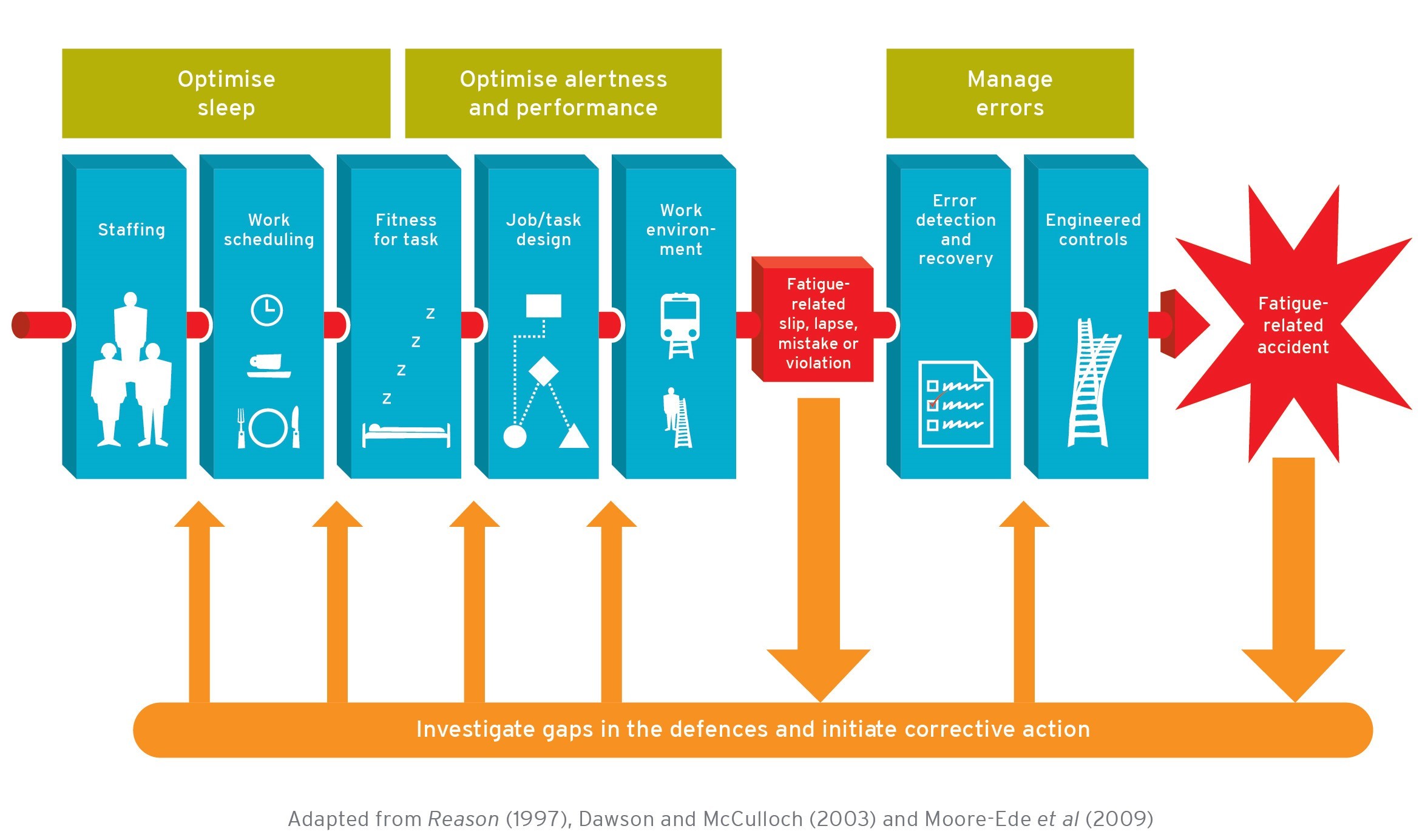Fatigue can be a major source of risk in a 24/7 transport industry like rail.
It is normal for workers, especially those undertaking shift work, to experience fatigue – a state of reduced mental or physical capacity caused by factors including sleep loss, extended time awake, circadian phase (time of day) and workload.
Fatigue can cause performance impairment. The level of impairment depends on the degree of fatigue experienced and the vulnerability of the particular tasks to the effects of fatigue.
Fatigue Risk Management Guideline
ONRSR has developed a Fatigue Risk Management Guideline to provide practical guidance to rail transport operators on how to manage the fatigue-related risks associated with rail safety work and set out ONRSR’s expectations for meeting the requirements of the RSNL.
The guideline presents a nationally consistent framework for fatigue risk management that supports the co-regulatory model of the RSNL and recognises the primary duty of rail transport operators to ensure the safety of their operations so far as is reasonably practicable (SFAIRP).
The guideline should be used by rail transport operators who are responsible for developing, implementing and managing a Fatigue Risk Management Program (FRMP) under the RSNL.
ONRSR has developed a simple diagram to provide an example of a multilayered approach to fatigue risk management.

Historical resources
Use of bio-mathematical models in managing risks of human fatigue in the workplace
This Safety Alert outlines some of the limitations of fatigue models drawing on findings of a review of computer-based fatigue models undertaken by ITSR. The purpose of this alert is not to criticise fatigue modelling but to alert the rail industry of potential limitations in the use of such modelling, and to provide strategies for incorporating fatigue modelling into a fatigue risk management regime.
Use of bio-mathematical models of human fatigue - further information on the Fatigue Audit InterDyne Model
This Safety Alert states that rail transport operators that are using the FAID model should review the findings of the FRA report in conjunction with the previous information provided by ITSR (Transport Safety Alert no. 34) and consider the applicability of the findings for the context in which they are using FAID in their operations.